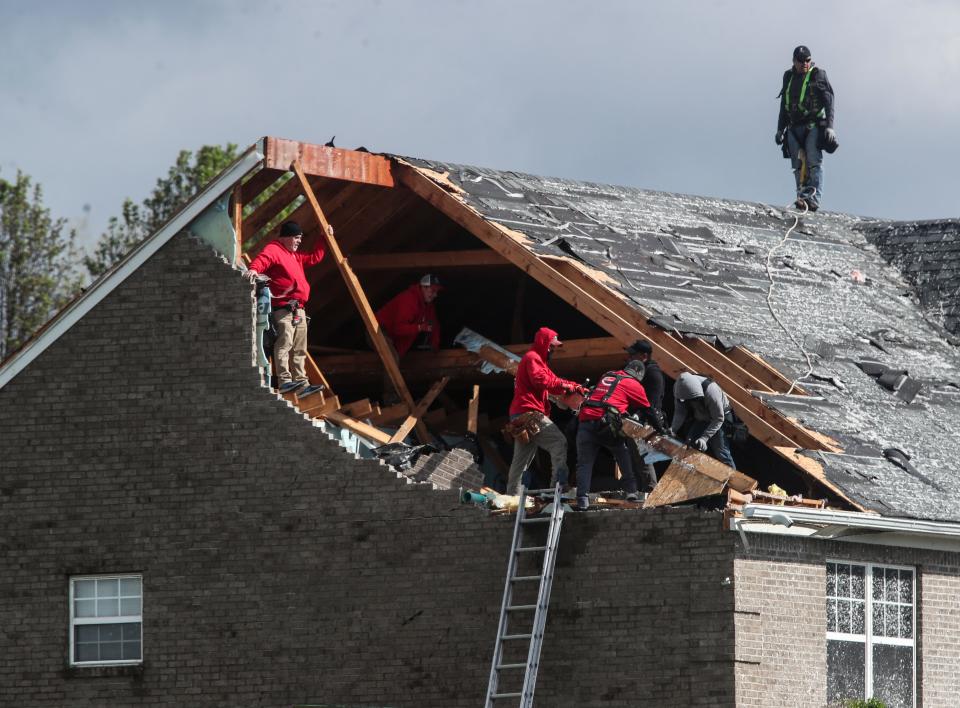A multi-day outbreak of severe weather could include tornadoes, flooding: What to know
April means severe weather, and this month has been no exception. Plus there's more on the way.
Forecasters are warning of another multi-day outbreak of severe weather over the central U.S., which started Tuesday and will last for much of the week. The storms Tuesday were forecast to rattle southern Iowa into northern Missouri and west-central Illinois, where a tornado watch was in effect.
Already this month, through April 15, there have been more than 1,100 reports of severe thunderstorms (which includes hail, wind, or tornadoes) across the nation, according to the Storm Prediction Center. But that is actually below the average pace for April, which concludes with an average of nearly 3,000 severe thunderstorm reports for the entire month.

Severe weather threats in Midwest, South
By Wednesday, the severe weather threat moves into Indiana, Michigan and Ohio, where cities such as Indianapolis, Detroit and Cleveland could all see intense thunderstorms. "Scattered severe thunderstorms are possible Wednesday afternoon and evening from southern Lower Michigan into parts of the Ohio Valley," the SPC said.
Heavy rain from the thunderstorms could also lead to flooding in some areas, the National Weather Service in Cleveland said.
And Thursday, it'll be the Deep South's turn to dodge the storms, where cities such as Memphis and Little Rock will be most at risk of bad weather. The SPC warned that "scattered strong to severe storms capable of gusty winds and hail will be possible Thursday from parts of Texas northeastward toward the Ohio Valley."
April is usually an active month for severe weather
April typically kicks off the worst of the severe weather season in the U.S., and this month started with a bang, Weather.com meteorologist Jonathan Erdman said, "with an outbreak of at least 74 tornadoes from Oklahoma to the Ohio Valley. That was followed a week later by another rash of severe weather that spawned at least 19 tornadoes in the Deep South."
Flash flooding has also been reported this month in the Ohio Valley, east Texas, New Orleans and Tallahassee, Florida, among other areas, Erdman said.
What is a severe thunderstorm?
The National Weather Service offers this specific definition of a severe thunderstorm: A thunderstorm is classified as “severe” when it contains one or more of the following: hail one inch in size or greater, winds gusting in excess of 57.5 mph, or a tornado.
Based on past weather data, the greatest severe weather threat area in the U.S. extends from Texas to southern Minnesota, according to the National Severe Storms Laboratory.
Spring is peak season for severe storms and tornadoes
While tornadoes can hit at any time, the U.S. is now into the peak of tornado season: April, May and June are "overwhelmingly the most active" when it comes to the thunderstorms that spawn these destructive forces of nature, according to Weather.com meteorologist Chris Dolce.
Contributing: Dinah Voyles Pulver, USA TODAY
This article originally appeared on USA TODAY: Weather forecast predicts multi-day severe weather outbreak, NWS says

